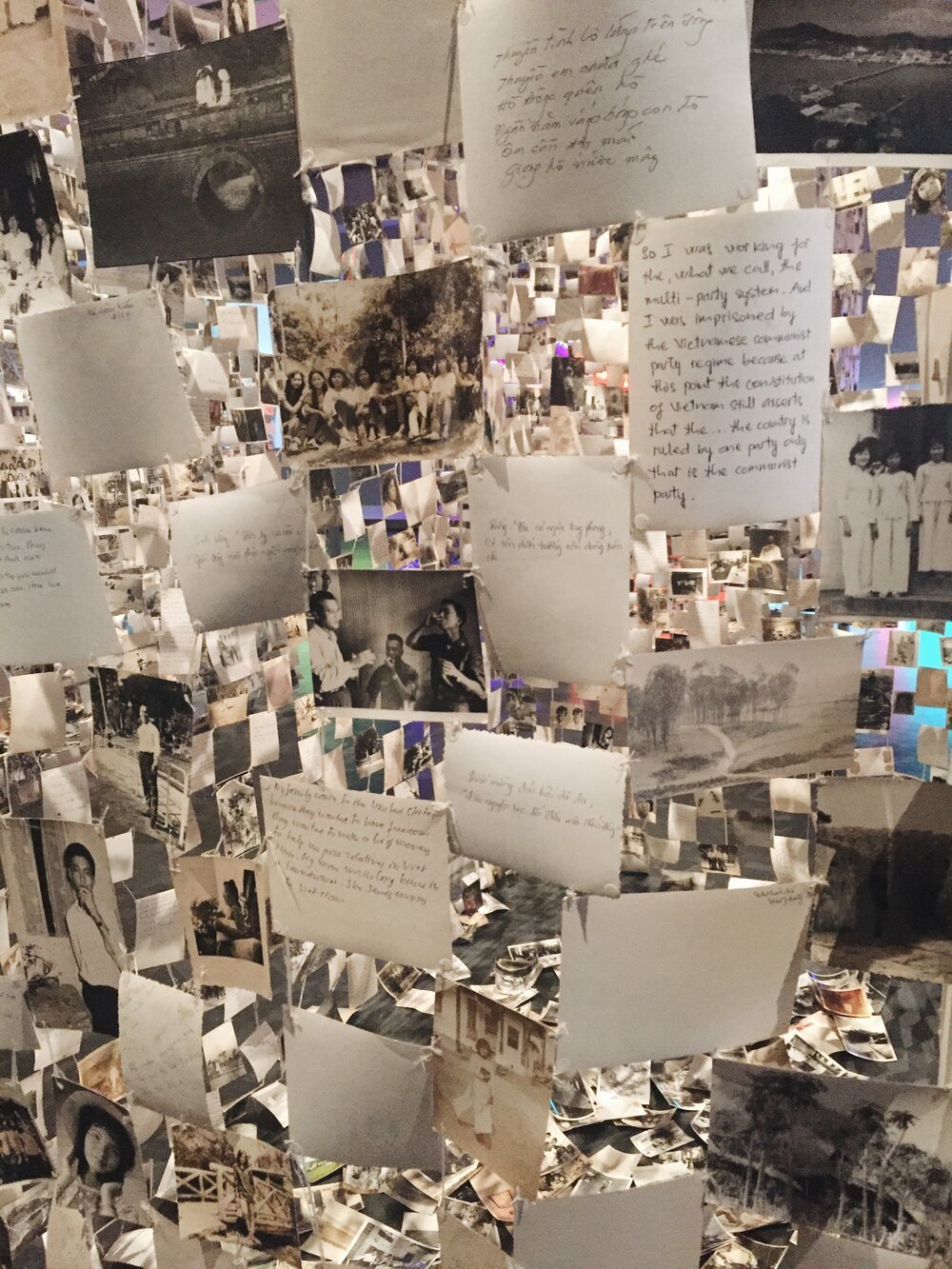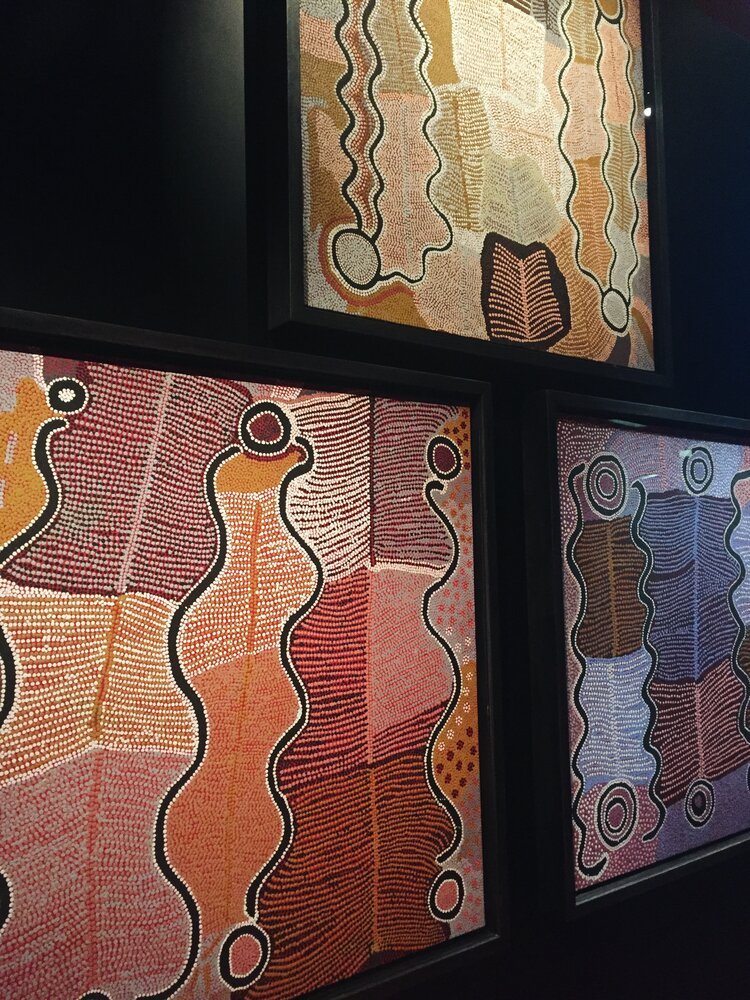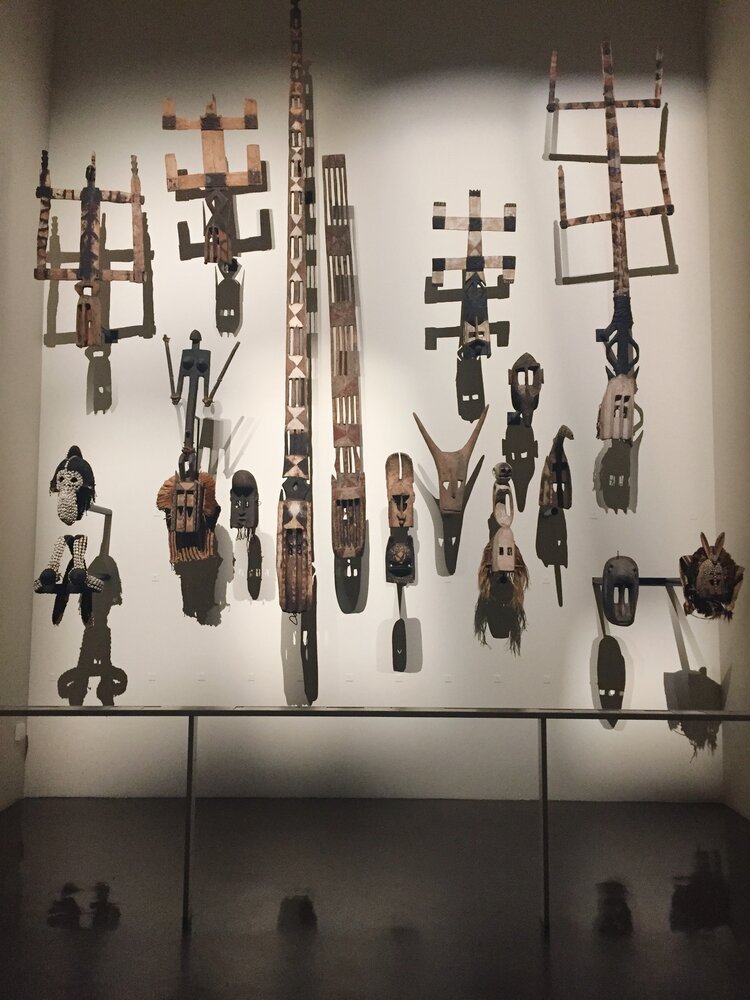Museum Review: Musée du Quai Branly
About the Museum
The Musée du Quai Branly—Jacques Chirac is a museum dedicated to art from Africa, the Near East, Asia, Oceania and the Americas. The institution focuses on indigenous and non-European art from the Neolithic period up to the 20th century.
It is a fairly new museum (having opened in 2006) yet contains more than one million objects—around 3500 are on display at any given moment. I visited the museum and research institution for the first time to see both the permanent collection as well as a temporary exhibition on contemporary art.
Note: The museum is free for EU residents under 26 as well as reduced/free for other specific circumstances. See full details here.
À toi appartient le regard
The special exhibition on view was À toi appartient le regard et (…) la liaison infinie entre les choses, a spotlight on contemporary art from 26 non-European artists. The internationally-focused exhibition was specifically concerned with photographic and film works. It is also the first exhibition on the contemporary image by the institution.
Samuel Fosso. Image credit: © J.M. Patras
The themes were aplenty. A number of works explored the physical and metaphorical implications of geography, globalization, travel, and displacement. Other works alluded to self-perception and constructions of identity through visual imagery. Historical narratives and their reconsideration was another concept present throughout the exhibition.
Dinh Q. Lê
Dinh Q. Lê
Samuel Fosso
Because the themes were so varying, it felt less like a cohesive show and more of a survey/biennial type presentation. As the artwork was so diverse in intention and impact, the vast number of thematic concepts could at times exacerbate a feeling of forced threads between artists, based primarily upon their non-Westernness. Nonetheless, there was some great art on display that was informative, contemplative, and visually enthralling.
Guy Tillim
Carlos Garaicoa
One thing I really appreciated were the collectible cards next to each work. Adjacent to the wall text, takeaway cardboard printouts featured an overview of each artists’ creative practice and supplementary information about the work on display. It was an interactive and efficient way for visitors to retain details about artists that interested them.
Gosette Lubondo
This exhibition will be on view until November 1, 2020.
Permanent Collection
It should be mentioned that the museum is massive. The temporary collection had an entire wing of the institution dedicated to its presentation, and the space for the permanent collection is equally impressive in size. To arrive to this section of the museum, we walked down a long path downstairs passing archival objects cleverly displayed behind clear glass, a testament to the institution’s immense collection.
The works on view are divided by region: Oceania, Asia, Africa, North Africa & Near East, and the Americas. Within these sections are subsections featuring art and objects from the countries, cultures, and tribes found within each respective region. Unlike the temporary exhibition, the collection eschews the white cube display and is instead a dimly lit space spotlighting objects in an archival manner. Though the arrangement of the collection is reminiscent of an anthropological display—make no mistake—not all the works are ancient, and many are as recent as the 20th century. It is a lot of art to take in all at once, but there were some spectacular works on display and the layout allowed for an organic walk through different regions of the world.

















